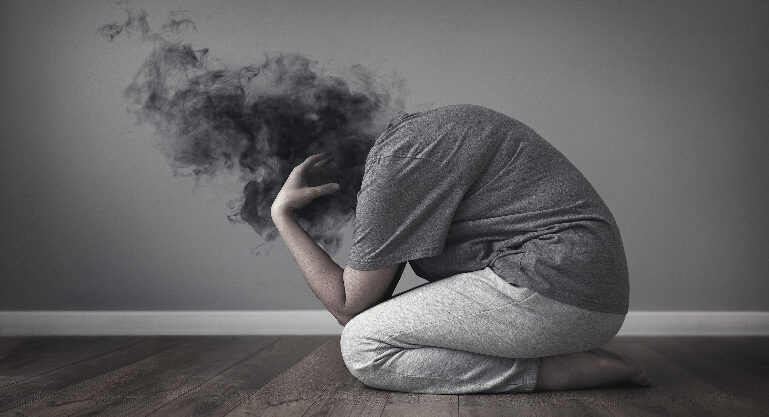Depression is not just a medical term, it’s an everyday reality for millions of people across the United States. When we ask “how common is it?”, the answer is: far more common than most people realize.
Prevalence in the U.S.
- Lifetime risk: Roughly 1 in 5 U.S. adults (20%) will experience depression at some point in their lives. That means if you’re in a room with 10 friends or coworkers, at least 2 of them have likely faced depression or will in the future.
- Annual rates: Every year, about 8–10% of U.S. adults: nearly 21 million people go through at least one major depressive episode.
- Adolescents (12–17 years): About 15–17% of U.S. teens reported having a major depressive episode in the past year. Depression in young people often gets overlooked, but these numbers make it one of the most urgent public health concerns for families and schools.
- Young adults (18–25 years): This age group reports the highest prevalence, with about 17% experiencing depression in the past year. Stressors include academic pressure, financial strain, career uncertainty, and social transitions.
- Adults 26–49 years: Depression affects about 9–10% of this age group annually, often linked with career burnout, parenting stress, or caregiving responsibilities.
- Adults 50 and older: Prevalence is lower (around 5–7%) but not negligible. Older adults face risks related to chronic illness, loneliness, or loss of loved ones.
Global Picture
According to the World Health Organization, depression affects more than 280 million people worldwide. It is currently the leading cause of disability across the globe. This means depression is not just “common”, it is one of the greatest public health challenges of our time.
Why Does It Seem More Common Today?
Some people wonder if depression is actually increasing or if we’re just talking about it more. The answer is a bit of both:
- Greater awareness & screening: More people are recognizing symptoms and seeking help.
- Reduced stigma: Younger generations in particular are more open to talking about mental health.
- Modern stressors: Financial uncertainty, social isolation, job insecurity, and constant digital connectivity have all intensified stress and contributed to rising rates.
- Impact of COVID-19: During the pandemic, depression rates nearly doubled in the U.S., and the lingering effects are still being studied.
What This Means for You
- Depression is not rare or a personal failing, it’s something millions live through.
- The fact that it’s so common means help is available and treatment works, whether that’s therapy, lifestyle changes, or community support.
- If you’ve ever felt like you’re the “only one” struggling, the data clearly says otherwise: you are not alone.
In Short:
Depression touches every age group, every background, every community. From teenagers navigating high school pressures to older adults facing life transitions, the numbers confirm: depression is widespread, and understanding its prevalence is the first step toward compassion and better care.
Ayurveda’s Perspective on How Common Depression Is
While modern science explains prevalence through data and demographics, Ayurveda approaches the “commonness” of depression through the lens of imbalances in mind-body energies (doshas) and the shifting environments in which we live. Here’s how Ayurveda explains why depression affects so many people today:
Dosha Imbalances Behind Depression
- Vata imbalance (air & space):
Leads to anxiety, overthinking, restlessness, and emptiness. When unchecked, this can spiral into depressive states marked by fatigue, insomnia, and loss of motivation. - Pitta imbalance (fire & water):
Creates anger, irritability, perfectionism, and burnout. In today’s high-pressure culture, many young professionals are prone to this type of depression. - Kapha imbalance (earth & water):
Results in heaviness, lethargy, oversleeping, emotional withdrawal, and weight gain. This pattern is especially common when people feel “stuck” in routines or lack stimulation.
Why It Feels So Widespread Today (Ayurveda’s View)
- Lifestyle Misalignment: Fast food, irregular sleep, excessive screen time, and chronic multitasking all disturb doshic balance.
- Disconnection from Nature: Ayurveda emphasizes alignment with natural rhythms (sunrise/sunset, seasonal eating). Modern life has broken this link, fueling imbalance.
- Unprocessed Emotions: Ayurveda holds that ama (toxic residue) can accumulate in the mind as well as the body when emotions are suppressed. This buildup can manifest as widespread depression.
- Urban Stress: High noise, pollution, and overstimulation increase Vata disorders, explaining why depression feels more common in modern cities than in nature-aligned lifestyles.
Ayurvedic Strategies for Collective Healing
- Dinacharya (daily routine): Going to bed early, waking up with the sun, and eating on time to restore mental balance.
- Sattvic Diet: Fresh fruits, vegetables, whole grains, ghee, and warm, lightly spiced meals nourish the mind.
- Herbal Support:
- Ashwagandha for stress resilience
- Brahmi (Bacopa) for clarity and focus
- Shankhpushpi for calming nervous energy
- Ashwagandha for stress resilience
- Mind-Body Practices: Yoga, pranayama (especially Nadi Shodhana and Bhramari), and meditation to settle Vata and balance emotions.
- Seasonal Awareness (Ritucharya): Adjusting food and activities with each season helps keep doshas stable year-round.
In Short
From this perspective, depression is common not simply because of “statistics,” but because our modern lifestyles have drifted far from natural rhythms. Ayurveda sees the rising prevalence as a collective imbalance, one that can be corrected by realigning daily habits, diet, and emotional processing with time-tested principles.



